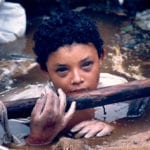 Movies and TV
Movies and TV  Movies and TV
Movies and TV  Health
Health 10 Miraculous Advances Toward Curing Incurable Diseases
 Miscellaneous
Miscellaneous 10 Undeniable Signs That People’s Views of Mushrooms Are Changing
 Animals
Animals 10 Strange Attempts to Smuggle Animals
 Travel
Travel 10 Natural Rock Formations That Will Make You Do a Double Take
 Movies and TV
Movies and TV 10 Actors Hidden in Your Favorite Movies
 Our World
Our World 10 Science Facts That Will Change How You Look at the World
 Pop Culture
Pop Culture 10 Incredible Female Comic Book Artists
 Crime
Crime 10 Terrifying Serial Killers from Centuries Ago
 Technology
Technology 10 Hilariously Over-Engineered Solutions to Simple Problems
 Movies and TV
Movies and TV 10 Movie Adaptions That Brought Popular Songs to Life
 Health
Health 10 Miraculous Advances Toward Curing Incurable Diseases
 Miscellaneous
Miscellaneous 10 Undeniable Signs That People’s Views of Mushrooms Are Changing
Who's Behind Listverse?

Jamie Frater
Head Editor
Jamie founded Listverse due to an insatiable desire to share fascinating, obscure, and bizarre facts. He has been a guest speaker on numerous national radio and television stations and is a five time published author.
More About Us Animals
Animals 10 Strange Attempts to Smuggle Animals
 Travel
Travel 10 Natural Rock Formations That Will Make You Do a Double Take
 Movies and TV
Movies and TV 10 Actors Hidden in Your Favorite Movies
 Our World
Our World 10 Science Facts That Will Change How You Look at the World
 Pop Culture
Pop Culture 10 Incredible Female Comic Book Artists
 Crime
Crime 10 Terrifying Serial Killers from Centuries Ago
 Technology
Technology 10 Hilariously Over-Engineered Solutions to Simple Problems
10 Haunting Details About The Donner Party’s Deadly Journey
In 1846, a group of 87 ordinary settlers calling themselves the Donner party set off west in order to start a new life in California. Many groups of travelers came before them, and many would come after them, yet the horrifying tragedy of their journey would make the Donner party the most famous group of pioneers in American history. Thanks in large part to Charles McGlashan, who conducted many interviews with the survivors, we know a great deal about what really went on in the Sierra Nevada mountain range when the snows fell and the traditional food ran out.
10The Perilous Sierra Nevada

As if the journey west wasn’t tough enough, the most difficult portion was among the last. Which meant that travelers were already exhausted and low on rations when they had to make the final 160-kilometer (100 mi) trek over the Sierra Nevada mountain range. The eastern slope was so steep that bringing wagons over the Sierra Nevada was long thought to be impossible, while the huge amount of snowfall that regularly accumulated only added to the difficulty.
After many failed attempts to bring wagons over the range, the Stevens-Murphy party of 1844 finally became the first to successfully make the journey. In the process, they established the California Trail, which would later be used by thousands of travelers, including the Donner party.
It has since been established that the worst winter in the recorded history of the Sierra Nevada just happened to be the year the Donner party attempted to make it through.
9Hastings’ Fatal Shortcut

Lansford Hastings was an adventurer who promoted a shortcut that he claimed would shave hundreds of miles off the journey west, while also providing a trail free of hostile Native Americans. It sounded too good to be true—and it was. Hastings greatly exaggerated the ease of the shortcut, which actually added almost 200 kilometers (125 mi) to the usual trail.
But that didn’t stop Hastings, who even wrote about the shortcut in his popular book The Emmigrant’s Guide to Oregon And California. The book was later found to be highly inaccurate, but it served its purpose in getting emigrants excited about traveling west. Hastings was also eager to show off his shortcut to parties traveling west, even offering to guide them himself. However, the large number of women and children in the Donner party delayed their journey enough that they missed Hastings’ guided trip and had to make their own way.
8The Warning That Never Arrived

Edwin Bryant was a journalist traveling with the Donner party. Eager to see Hastings’ much-hyped shortcut, he went ahead to scout the trail. Initially optimistic, Bryant rapidly became concerned about the rough terrain, which he doubted the wagons of the Donner party would be able to handle. Convinced the trail spelled disaster, he returned to the trading post at Black Fork and left a warning letter for the Donner party, instructing them not to risk the shortcut. But it seems that the Donner party never got the letter.
It is commonly theorized that Jim Bridger, the legendary frontiersman and owner of the trading post, intentionally did not deliver Bryant’s warning to the Donner party. Bridger’s trading post was perfectly positioned to benefit if the shortcut was widely adopted by travelers heading west, which Bryant’s dire warning jeopardized. Instead, Bridger gave the Donner party the written instructions that Hastings had left for them, allowing the travelers to continue on their way oblivious to the dangers ahead.
The party members themselves were optimistic about the new route, with James Reed declaring: “Hastings Cutoff is said to be a saving of 350 or 400 miles and a better route. The rest of the Californians went the long route, feeling afraid of Hastings’s cutoff. But Mr. Bridger informs me that it is a fine, level road with plenty of water and grass. It is estimated that 700 miles will take us to Captain Sutter’s fort, which we hope to make in seven weeks from this day.”
7The Murder That Exiled A Leader

Just as Bryant had predicted, the shortcut turned out to be a grueling waste of time, depleting the party’s scarce resources and fraying tempers. Things came to a head shortly after the party made it through Hastings’ Cutoff and returned to the more established trail. Two wagons became entangled, causing their owners, James Reed and John Snyder, to begin cursing at each other. Eyewitness accounts from the other party members at the scene agree that John Snyder then began beating James Reed over the head with his ox whip. To defend himself, Reed plunged a knife into Snyder’s chest, killing him almost instantly.
On hearing of Snyder’s death, the rest of the group demanded that Reed be hanged for murder. However, Reed’s wife begged for mercy, arguing that her husband had only been defending himself. After some discussion, the party decided to exile him instead.
The exile meant that Reed had to leave his wagon behind, which effectively also meant leaving his wife and children. Knowing how delayed the Donner wagon train had become following the Hastings shortcut, Reed rushed ahead along the California Trail, hoping to send provisions back to the party. Realizing the party would struggle to make it through the mountains in time, he began to think that he would never see his family again. He did—and he would actually play the key role in their survival.
6Losing The Race By A Single Day

Even with all the delays, the Donner party still managed to reach the Sierra Nevada by October. In fact, local Native Americans estimated that they still had a month before the first snows would close the pass. This final ray of hope lifted the mood of the whole party. But it only made what came next even crueler.
On October 31, the Donner group spent the night just 300 meters (1,000 ft) from the summit of the pass. Their plan was to clear the summit the next day and begin descending down out of the range, leaving the worst of the journey behind them. In fact, the only reason they didn’t just clear the summit that day was because one of the Donner family wagons had broken a wheel. Figuring they had plenty of time, the rest of the party decided to wait for them.
It snowed 1.5 meters (5 ft) that night. With the summit impenetrable, the Donners realized that their chance of crossing the mountains before winter set in was gone. Despite their low supplies, they had no choice but to return to Truckee Lake, now known as Donner Lake, and prepare to make camp.
5Oxen, Bark And Twigs
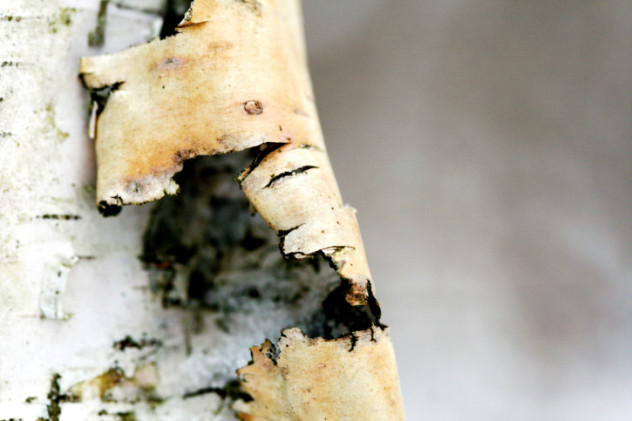
Soon, hunger set in. Margaret Reed recalled that the group “had not the first thing to eat. We seldom thought of bread for we had not any since I could remember.” With supplies gone and the deep snow making it difficult to hunt or forage, the party turned to some alternate sources of “food.”
First, they quickly ate the few oxen that had survived the arduous journey. Then, they started gnawing on leather and the dried hides used for tents. Elizabeth Donner remembered eating a lot of bark and twigs as a way to ease the hunger. This certainly didn’t supply much in the way of sustenance, but simply giving the teeth something to chew on apparently went some way to “soothe the gnawings which made one cry for bread and meat.”
The first person to die from lack of food was young Bayless Williams, who passed away on December 15, just a month and a half after the snows trapped the party at the lake.
4The First Taste Of Human Flesh
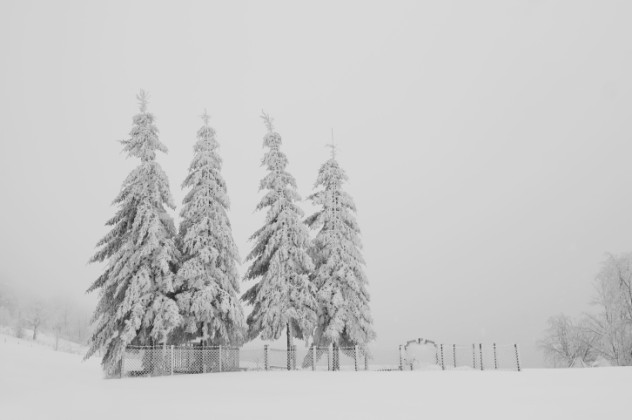
In mid-December, a small group set out to try to make it over the pass on foot. They would come to be known as the Forlorn Hope. The name was fairly appropriate—the group left walking on homemade snowshoes and took almost no food or supplies with them. (In fairness, there was almost none to take.) The heavy snow meant that they only averaged about 6 kilometers (4 mi) a day. Things got even worse after a few days, when the snow grew thicker and a blizzard left the group disoriented. Out of food and starving, they began talking about sacrificing one of their own to feed the others.
As “luck” would have it, the problem of who should be sacrificed apparently solved itself when Party member Patrick Dolan lost his mind and stripped all of his clothes off. Unsurprisingly, he quickly lapsed into a stupor and died. An unknown member of the Forlorn Hope cut some of the flesh from his corpse, and the group began to roast and eat the meat. As others perished, the survivors continued to butcher them, labeling the meat to ensure that nobody would have to eat a relative or close friend.
3The Tragic Death Of Two Native American Heroes

Two members of the Forlorn Hope never ate human flesh and yet still survived longer than many, working tirelessly to help the party through the Sierra Nevada. They were two Native Americans named Luis and Salvador.
Luis and Salvador found the party when news of their delay reached Sutter’s Fort in California. They brought with them an expert knowledge of survival in the Sierras and a willingness to put their own lives at risk to reach the stranded party. Of the Forlorn Hope, they alone refused to resort to cannibalism.
But once the Forlorn Hope had finished eating those who had died of natural causes, member William Foster suggested that they should kill Luis and Salvador, the only non-whites present. Another member, William Eddy, strongly disagreed and even warned Luis and Salvador about the potential plot. Apparently, the pair struggled to believe what Eddy was telling them but vanished out of fear once they recovered from their shock.
Over a week later, the Forlorn Hope came across the two Native Americans, who had apparently collapsed from hunger. William Foster, who was described as “insane” by that point, immediately shot and killed both of them. The party all ate their bodies, which provided enough nourishment for the Forlorn Hope to clear the Sierras and reach the Sacramento Valley.
2The Terrifying Lewis Keseberg

As winter wore on, rescue parties were sent to bring back as many survivors as possible. Every time rescuers reached the Donner camps they seemed to find more and more mutilated and half-eaten bodies.
The fourth and final rescue mission arrived on April 10, 1847. It was mostly intended to salvage property left at the camps, since all the people were believed to be rescued or dead. To their surprise, the mission discovered Lewis Keseberg, alive all by himself. To this day, controversy surrounds his survival, since he was found with a gun, pots of human meat, and much of the Donner family’s gold. The rescuers even found animal meat hidden untouched in the corner, which they deemed still good enough to eat.
William Eddy was one of the rescuers that found Keseberg—only to realize that Keseberg had been feasting on the remains of his son. Eddy vowed to kill Keseberg then and there, while the other members of the rescue party seriously considered lynching him based on the apparently murderous nature of his survival. However, cooler heads prevailed, and Keseberg convinced the rescuers to let him return to Sutter’s Fort with them. He avoided any charges, but lived the rest of his life in solitude, since tales of his cannibalism followed everywhere he went.
1The Final Body Count
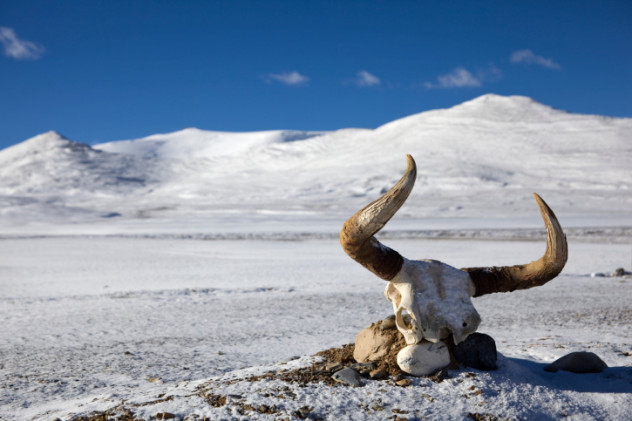
By late April 1847, the tragedy of the Donner party was finally over. Keseberg’s discovery by the fourth and final relief party meant that all of the survivors had finally made it to California. Almost a year to the day after the Donners began their journey west, it was over.
Eighty-seven men, women, and children began the journey. Only 46 survived. That number would have undoubtedly been a lot lower if not for the heroic rescue missions, the persistence of James Reed in demanding help be sent, and the selfless guidance of Luis and Salvador. Of all the families on the journey, it was the Donner family that lost the most. All four of the adults and four of the children died. On a happier note, not a single member of the Reed family died, nor did any of the Reeds engage in cannibalism.
It is estimated that around half of the survivors engaged in cannibalism, while nearly all of the dead bodies were eaten to some degree.
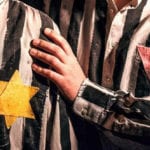



![Top 10 Haunting Images Of Historic Tragedies [DISTURBING] Top 10 Haunting Images Of Historic Tragedies [DISTURBING]](https://listverse.com/wp-content/uploads/2020/05/33758v-150x150.jpg)
